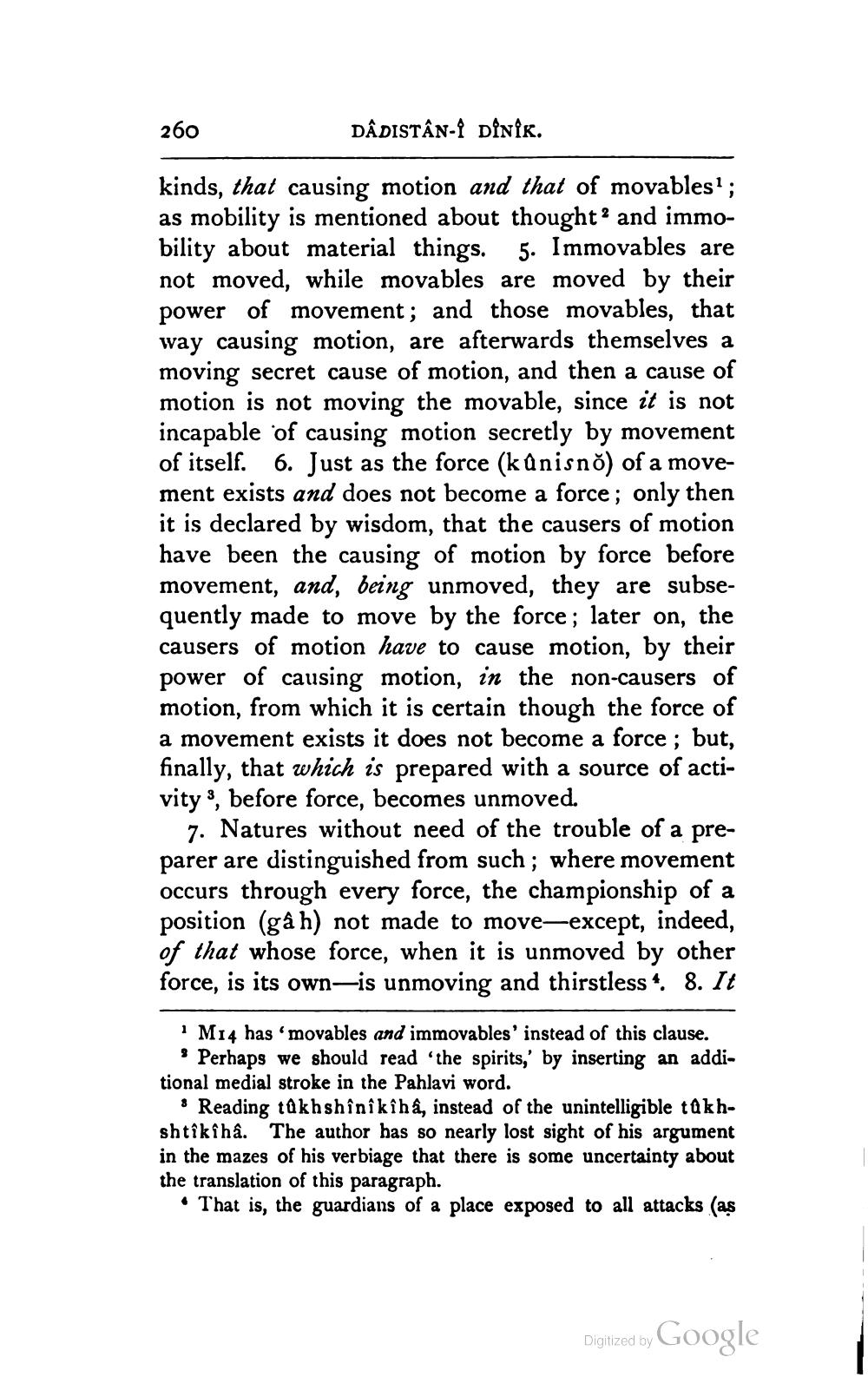________________
260
DÂDISTÂN-9 dinik.
kinds, that causing motion and that of movables?; as mobility is mentioned about thought and immobility about material things. 5. Immovables are not moved, while movables are moved by their power of movement; and those movables, that way causing motion, are afterwards themselves a moving secret cause of motion, and then a cause of motion is not moving the movable, since it is not incapable of causing motion secretly by movement of itself. 6. Just as the force (kūnisno) of a movement exists and does not become a force; only then it is declared by wisdom, that the causers of motion have been the causing of motion by force before movement, and, being unmoved, they are subsequently made to move by the force; later on, the causers of motion have to cause motion, by their power of causing motion, in the non-causers of motion, from which it is certain though the force of a movement exists it does not become a force ; but, finally, that which is prepared with a source of activity 3, before force, becomes unmoved.
7. Natures without need of the trouble of a preparer are distinguished from such ; where movement occurs through every force, the championship of a position (gå h) not made to move-except, indeed, of that whose force, when it is unmoved by other force, is its own—is unmoving and thirstless 4 8. It
i M14 has 'movables and immovables' instead of this clause.
* Perhaps we should read the spirits,' by inserting an additional medial stroke in the Pahlavi word.
: Reading takhshiniki ha, instead of the unintelligible takhshtîkîhâ. The author has so nearly lost sight of his argument in the mazes of his verbiage that there is some uncertainty about the translation of this paragraph.
• That is, the guardians of a place exposed to all attacks (as
Digitized by Google




